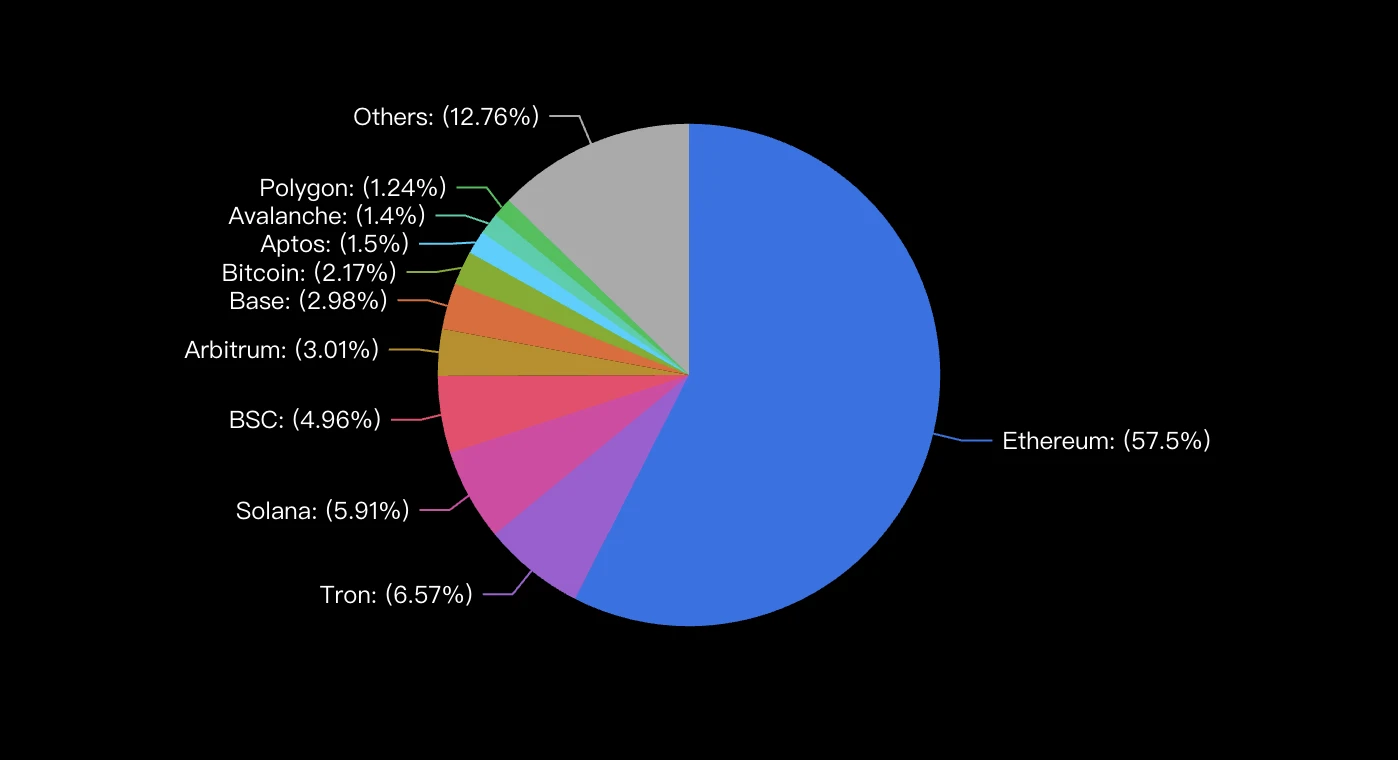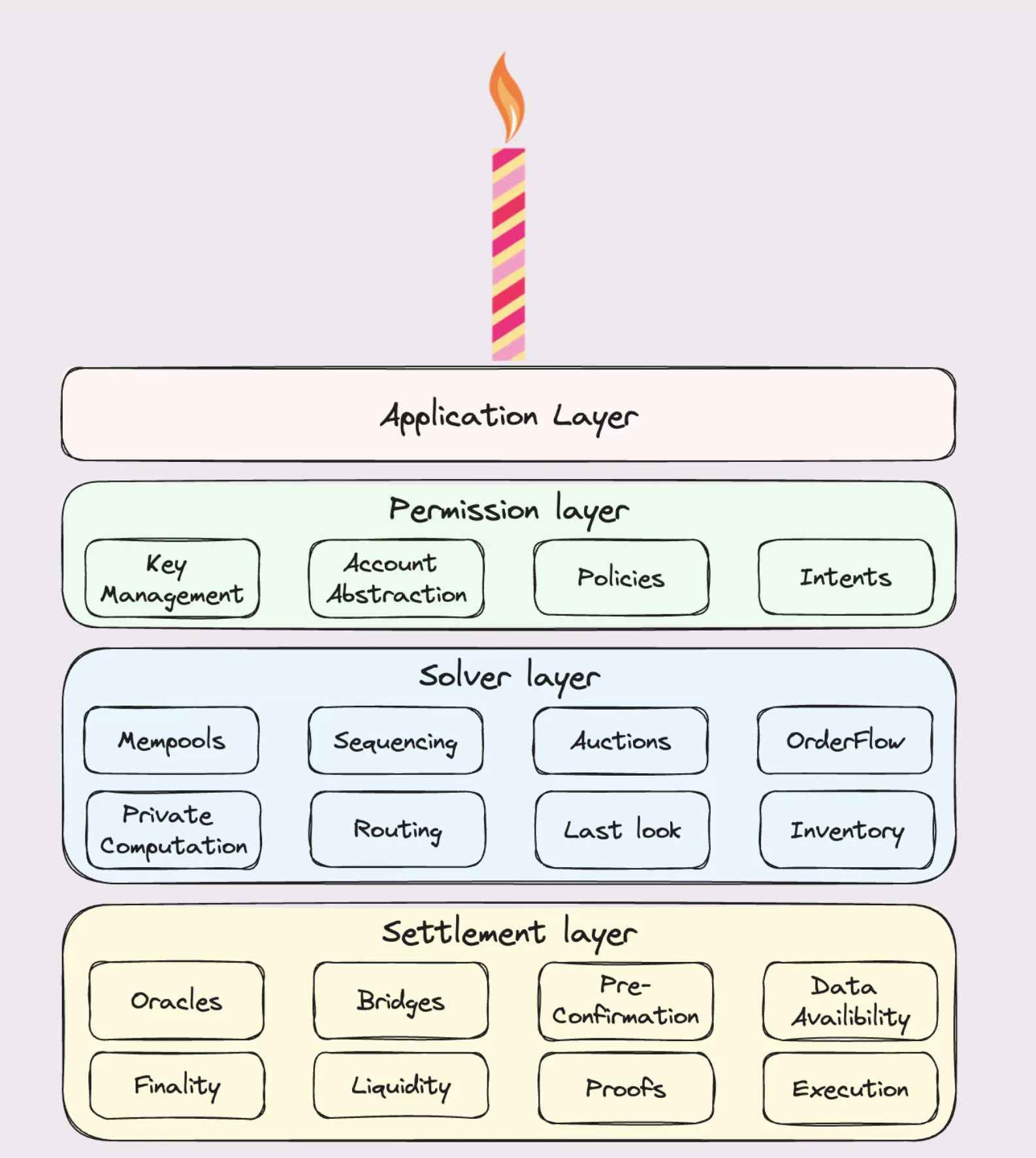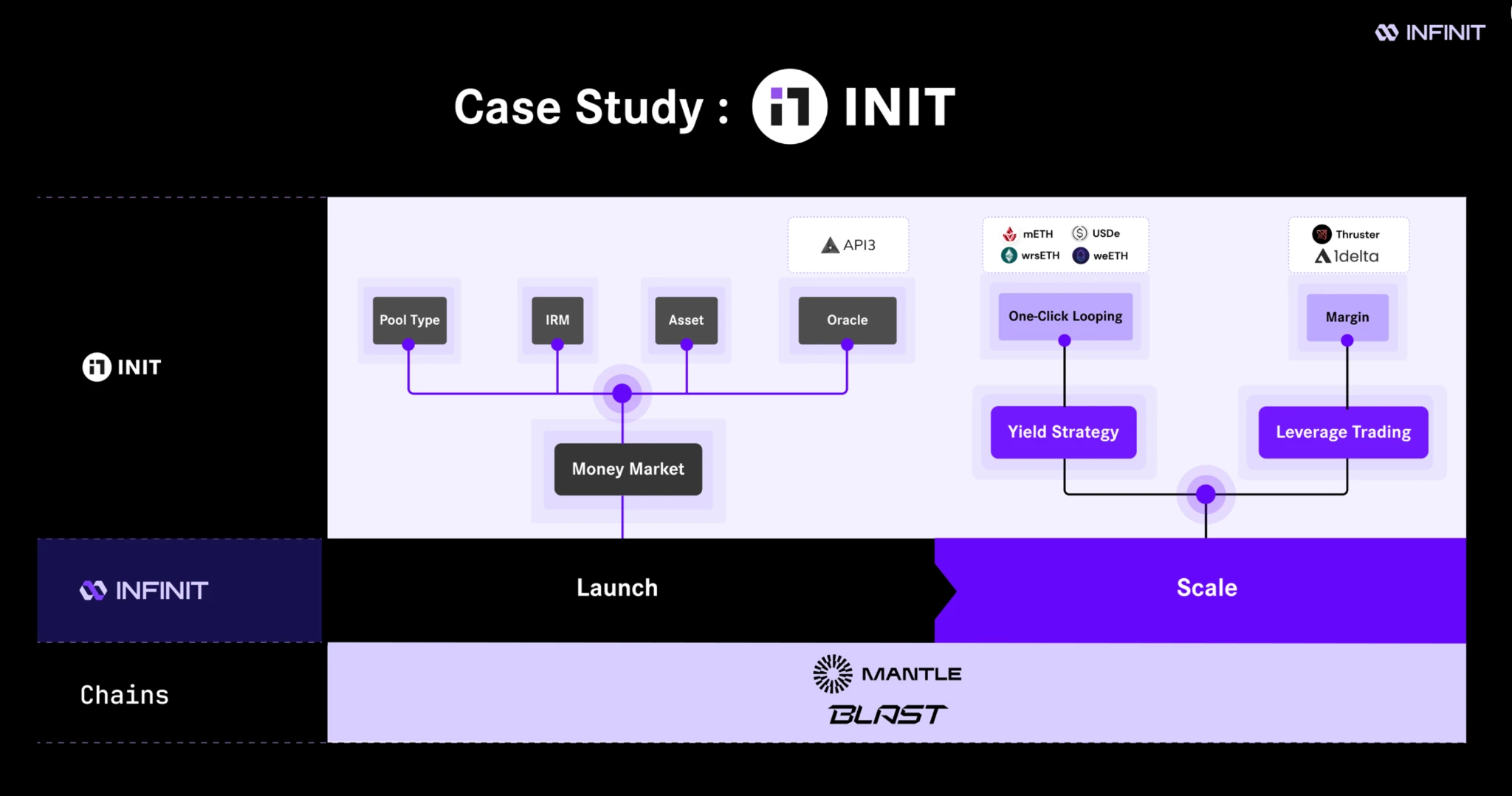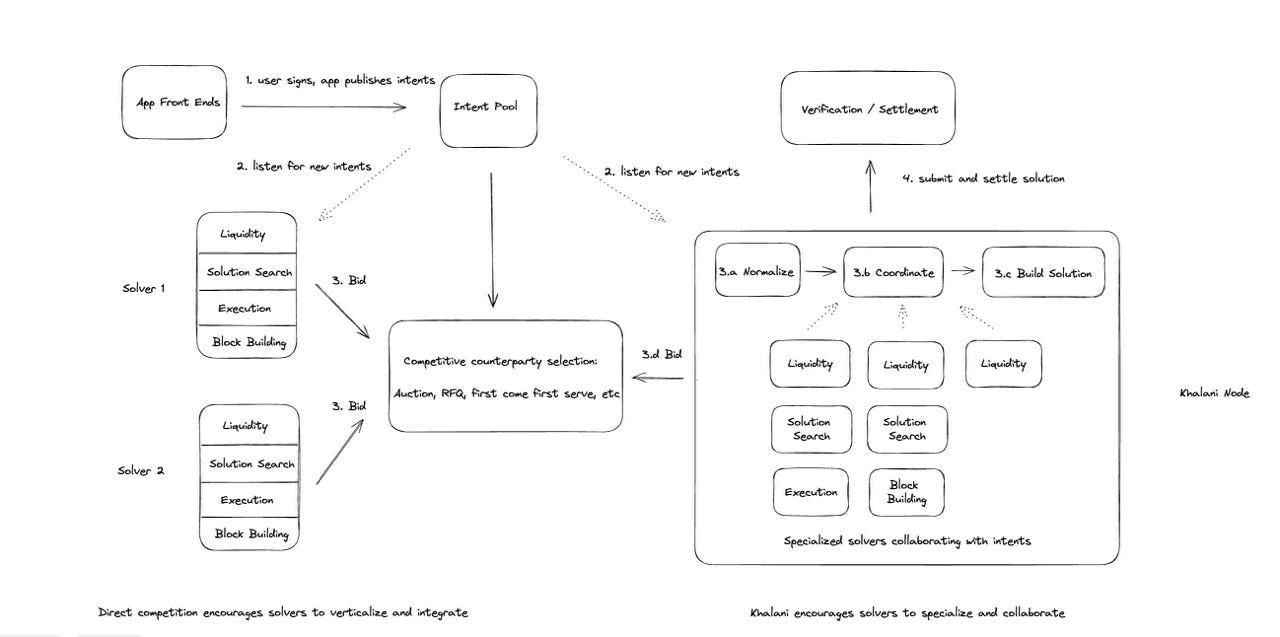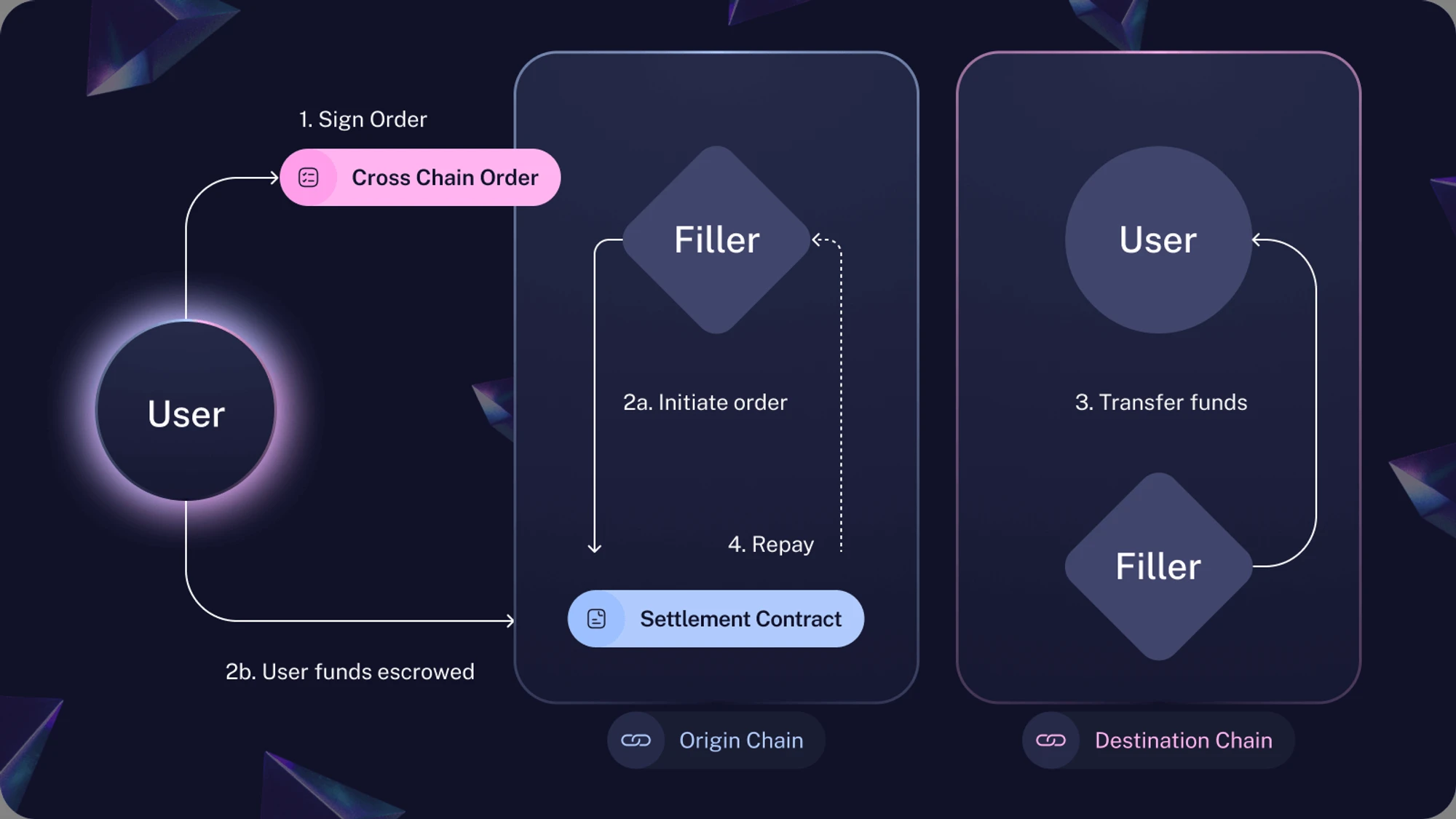Gate Ventures Research Insights: Research on Liquidity Fragmentation in the Layer2 Era
введение
Since Ethereum turned to a Layer 2-based expansion solution, coupled with the rise of tools such as RaaS, a large number of public chains have developed rapidly. Many entities want to build their own chains to represent different interests and seek higher valuations. However, the emergence of many public chains has made it difficult for the development of the ecosystem to keep up with the pace of public chains, resulting in many projects breaking even at TGE.
With the help of OP Stack, Coinbase launched its own Base Layer 2, Kraken released Ink; with the help of ZK technology, OKX launched XLayer; Sony released Soneium, LINE launched Kaia, etc. Today, the financial and technical thresholds for building a chain have been greatly reduced, and the cost of operating a chain based on OP Stack is about US$10,000 per month.
The future will surely be an era of multi-chain coexistence. Although these Layer 2 chains may choose EVM compatibility to achieve interoperability, it is difficult for them to build applications and reach consensus on the same chain because the Web2 entities behind them have a large number of downstream applications.
TVL Breakdown, source: Defillama
The current multi-chain ecosystem brings a new challenge: liquidity and state decentralization. Since the existence of multiple chains is inevitable, interoperability is an area that must be explored and solved. There are many liquidity solutions at present, such as chain abstraction (Particle Network, Socket, XION, INFINIT, Borsa), intention (Anoma, Khalani), Clearing Execution (Connext), Native CrossChain (Cross), ZKSharding (=nil; Foundation), but their core essence is the same.
Chain Abstraction Stack, Source: Frontier Research
We use the industry-recognized Cake architecture to introduce the core components of cross-chain abstraction from top to bottom:
Прикладной уровень
This is the layer that users interact directly with and is also the most abstract layer in the liquidity solution because it completely shields the details of liquidity conversion. In the application layer, users interact with the front-end interface and may not understand the underlying liquidity conversion mechanism.
Permission Layer
Located below the application layer, users satisfy their trading intentions by connecting their wallets to dApps and requesting quotes. The intention here refers to the final transaction result (i.e. output) expected by the user, rather than the specific execution path of the transaction.
Key Management and Account Abstraction
Due to the existence of a multi-chain environment, an account management and abstraction system that adapts to different chains is needed to maintain the unique account structure of each chain. For example, SUIs object-centric account system is completely different from EVM. One Balance is a representative project in this field. It builds a trusted account system without the need to establish inter-chain consensus, only trusted commitments between existing account systems. Near Account achieves abstract management by generating multi-chain account wallets for users, greatly optimizing the user experience and reducing UX fragmentation. However, the liquidity aspect mainly integrates existing public chains.
Solver Layer
This layer is responsible for receiving and implementing the users transaction intentions, where Solver roles compete to provide a better user experience, including faster transaction times and execution speeds. Based on this, intent-based projects such as Anoma have built a variety of intent-driven solutions. Derivatives of such intents, such as Predicate components, can implement user intent under specific rules.
Слой поселений
This is the middleware layer used by the solution layer to implement user intent. The core components of the liquidity and state decentralized solution include:
-
Оракул : used to obtain status information on other chains.
-
Cross-chain bridges : responsible for cross-chain information and liquidity transmission.
-
Pre-Confirmation : Shorten the cross-chain confirmation time.
-
Data Availability (DA) : Providing accessibility to data.
In addition, factors such as inter-chain liquidity, finality, and Layer 2 proof mechanism must also be considered to ensure the efficient operation of the entire multi-chain system.
Solution
Currently, there are many solutions to solve liquidity fragmentation on the market. After reviewing a large number of solutions, we found that there are mainly the following ways:
-
RaaS-centric : Similar to Rollup solutions such as OP Stack, specific shared sorters and cross-chain bridges are added to assist Rollups built on OP Stack in sharing liquidity and status. This hopes to solve the dispersion of liquidity and status at a higher level. One of the more subdivided solutions is the separate design of a shared sorter. This solution is more targeted at Layer 2 and is not universal, such as Astria, Espresso, and Flashbots.
Chain Abstraction, source: NEAR
-
Account-centric : Similar to NEAR, a full-chain account wallet is built to support the signing and execution of transactions across multiple blockchain protocols through a technology called chain signature. The core component is the MPC network, which signs multi-chain transactions on behalf of users. Although this solution can greatly solve the problem of UX fragmentation, it involves complex backend implementation for developers and does not fundamentally solve the problems of liquidity and state dispersion.
-
Centered on the off-chain intention network : that is, the Solver Network in our Introduction cake architecture diagram. The core is that users send intentions to the Solver network, and the Solver role competes for quotes to give the best completion time and transaction price. These Solvers can be AI Agents, CEXs, Рынок Makers, and even integrated protocols such as Liquorice. Projects in this area include Anoma, Khalani, Enso, aori, and Valantis. Although intentions can theoretically achieve complex cross-chain operations of arbitrary difficulty, they do require Solvers with sufficient liquidity to assist in implementation, and when encountering some off-chain needs, Solvers are likely to commit fraud. If fraud proofs and other means are introduced, the difficulty of implementing the Solver Network will become higher, and the threshold for running Solvers will also be higher.
-
Centered on-chain liquidity network : This direction is specifically aimed at optimizing cross-chain liquidity issues, but does not solve the problem of decentralized state on other chains. Its core is to build a liquidity layer on which applications are built to share full-chain liquidity. Some projects include: Raye Network, INFINIT, Everclear, Elixir, etc.
-
On-chain application-centric : This type of application builds high-liquidity applications by integrating large MMs or third-party applications, such as Liquorice, Socket, Radiant Capital, 1inch, Hedgemony, etc. This type of project needs to manage complex cross-chain processes and has extremely high requirements for developers, so it is also very easy to be attacked by hackers.
Solving the liquidity problem is a very important proposition. In the financial world, liquidity often represents everything. If we can build an integrated liquidity platform, especially integrating scattered full-chain liquidity, it will have great potential. We have also looked at many different solutions.
In the above two categories, we can see that according to the cake structure, the Settlement Layer is the most atomic solution. On top of these atomic solutions such as cross-chain, oracle, and Pre-Confirmation solutions, a more abstract layer is built, namely the Solver Layer, Permission Layer, and Application Layer. The different levels of this set of abstract or liquidity solutions that we listed above that are built in different directions can be understood as upstream and downstream relationships. However, these solutions are still not atomic solutions. The entire problem of liquidity fragmentation has brought about the emergence of many complex derivative problems. Therefore, a variety of solutions have been derived for interoperability. But in essence, it still depends on these components. Next, we will discuss several typical chain abstraction projects to see how each of them solves the problem of liquidity fragmentation from its own starting point.
INFINIT
INFINIT Structure, source: Infinit
INFINIT has built a DeFi-based RaaS service that can provide the components needed for direct construction of DeFi protocols, such as Oracle, Pool Type, IRM, Asset, etc. It can also provide components such as Leverage Trading and Yield Strategy that can be used immediately. It is equivalent to other application construction ends, but the final liquidity is placed on the liquidity layer of Infinit. However, it has not yet disclosed the underlying working principle. At present, INFINIT has obtained a $6 million seed round of financing from Robot Ventures, Electric Capital, and Maelstrom Capital.
Khalani Network
Khalani Network Structure, source: Khalani Network
Khalani built three core components, namely Intent Compatibility Layer, Validity, and Universal Settlement Layer.
External applications or intent layers can publish intents to Khalani, and then Khalanis Intent compatibility layer can convert external intents into a format that the protocol Solver can recognize. The standardized format used is the Validity language. The Khalani node is responsible for submitting the final result to the general settlement layer through cross-chain bridges, fast settlement technologies, etc. This project is still in the construction stage and no further work details have been disclosed. In August, it received a seed round of financing of US$2.2 million from Ethereal Ventures, Nascent, Maelstrom Capital, etc.
Liquorice
Liquorice Structure, source: Liquorice
Liquorice is a decentralized application that enables auction-based price discovery and one-sided liquidity pools. Liquorices main mission is to provide professional trading companies with efficient inventory management tools and easily connect to core DeFi protocols such as 1inch and Uniswap X when using intent to settle transactions. At the same time, Liquorice creates a lending market for it to conduct lending transactions. This application is more focused on the transaction itself. It is still in the development stage. It announced in July that it had received a $1.2 million Pre-seed round of financing led by GreenField .
Xion
Xion is an upgrade of the Burnt brand. In the past, Burnt focused on consumer applications. Later, the team found that there was a huge fragmentation problem in the on-chain interaction, so Xion was built to improve this problem. Xion is built on the Comet BFT consensus protocol. The cross-chain communication it adopts is based on Cosmos IBC, so it is more native and secure than other cross-chain bridges. It has conducted four rounds of financing, and investors include Animoca, Multicoin, Alliance DAO, Mechanism, etc.
=nil; Foundation
nil is the developer of Ethereums ZK computing power market, ZK coprocessor and Layer 2, and the team has a deep foundation in ZK technology. It proposed the zkSharding solution, which uses ZK technology to horizontally expand the Ethereum mainnet, execute shards to process transactions in parallel and generate ZKP, while the main shard verifies data, communicates with Ethereum and synchronizes network status between all validators. The main shard also manages the distribution of validators and accounts in the execution shard. The consensus protocol used by the verification committee is also Hotstuff, which is common in the latest parallel execution projects. =nil; L2 embeds cross-shard communication into the protocol from the beginning. Cross-shard messages are verified as transactions by the validator committee of each shard.
The basic idea is to build an embedded cross-shard communication architecture similar to IBC through the sharded Layer 2 architecture, so as to solve the problems of liquidity and state dispersion. However, the core idea is not reasonable, because the problem solved by liquidity dispersion is the problem of multiple chains, and it builds a single Layer 2, which means that if you want to solve it, all chains need to become a shard of ZK-sharding, which is difficult to achieve.
ERC-7683
ERC-7683, source: Across
Ethereum is also working on solving this cross-chain liquidity problem. Currently, Arbitrum, OP, and Uniswap are the first to publicly support the ERC 7683 standard, which also uses an Intent-based cross-chain method. Its core goal is to establish common standards for cross-chain operations across L2 and side chains, standardize order and settlement interfaces, and achieve seamless cross-chain execution. Its main core is a Filler, which can also be said to be a Solver role in the chain abstraction. The proposal was jointly built by Uniswap and Across and is currently being reviewed by the Cake Working Group.
OP Stack
OP Stack, ERC-7683, and zkSharding are all solutions to the fragmentation of liquidity between Layer 2 in Ethereum, which are solved at the architecture level, consensus level, and application level. OP Stack solves the problems of information transmission and sequencer decentralization at one time by designing a complete multi-layer 2 solution. When you use the OP Stack architecture, cross-chain contracts will be automatically deployed, and there will be a Supervisor to challenge and avoid the transmission of false cross-chain information. Currently, Coinbase, Uniswap, Kraken, etc. use the OP Stack architecture.
Among them, Unichain is a typical example. Unichain mainly solves the problem of cross-chain liquidity fragmentation through integration with the Superchain network. This setting promotes seamless liquidity movement by providing the following functions:
Intent-based cross-chain bridge: The bridge supports fast and reliable liquidity transfer between blockchains, allowing users to set intentions to help the system automatically select the best path for liquidity movement. This approach abstracts away complexity for users, making cross-chain transactions smoother and faster.
Unichain Validation Network (UVN): This decentralized network of node operators validates cross-chain transactions, providing faster economic finality. Faster finality is critical to ensure efficient settlement of cross-chain transactions, thereby minimizing the risk of liquidity fragmentation caused by delayed settlement.
Flashblocks and Verifiable Block Construction: By using Flashblocks, Unichain has significantly reduced block times, improved liquidity provider efficiency, and enabled a more synchronized cross-chain market. Flashblocks help ensure that liquidity is always available and reduce the negative impact caused by block confirmation delays, which can lead to fragmentation of liquidity.
Подведем итог
Solving the problem of cross-chain liquidity is a very complex field with many solutions. For example, the Layer 2 solution is divided into embedding cross-chain messages from Ethereum, especially ERC-7683, and Layer 2 such as OP Stack built by OP to share Sequencer. Apart from the Layer 2 context, all Layer 1s also face the problem of liquidity, status, and user experience fragmentation. There are application-centric solutions specifically for liquidity, off-chain solutions based on Solver Network, and even account-centric solutions like NEAR, but they also need to be based on off-chain roles such as Solver.
We tend to agree that the fragmentation of cross-chain liquidity, status, and user experience is a problem for the entire blockchain industry. If we think about it as a whole, we need to do it in a more abstract way, similar to chain abstraction. This is equivalent to the entrance to the real Web3, solving the fragmentation in user experience, and integrating liquidity and status in a place that users cannot perceive. The specific integration is divided into using the Solver network under the chain and atomic integration of cross-chain bridges and other facilities, which are all worth discussing. In general, the future must be multi-chain. Solving the problem of dispersed liquidity is a problem that the industry must face, and this integration of full-chain liquidity has a vast growth space, and it is possible to build the Google of the Web3 era.
Отказ от ответственности:
This content does not constitute any offer, solicitation, or recommendation. You should always seek independent professional advice before making any investment decision. Please note that Gate.io and/or Gate Ventures may restrict or prohibit all or part of the Services from restricted regions. Please read their applicable user agreements for more information.
О компании Gate Ventures
Гейт Венчерс — венчурное подразделение Gate.io, специализирующееся на инвестициях в децентрализованную инфраструктуру, экосистемы и приложения, которые изменят мир в эпоху Web 3.0. Гейт Венчерс работает с мировыми лидерами отрасли, чтобы предоставить командам и стартапам инновационное мышление и возможности для реорганизацииdefiновые модели социального и финансового взаимодействия.
Official website: https://ventures.gate.io/
Twitter: https://x.com/gate_ventures
Medium: https://medium.com/gate_ventures
This article is sourced from the internet: Gate Ventures Research Insights: Research on Liquidity Fragmentation in the Layer2 Era
Related: Uptober has been achieved? The market sentiment is conservative before the election
Original author: BitpushNews On Thursday, the U.S. Department of Labor released its latest personal consumption expenditures (PCE) report. The core PCE price index was 2.7% year-on-year in September, higher than the expected 2.6%. The PCE price index was 2.1% year-on-year in September, the lowest level since early 2021 and slightly higher than the Federal Reserves 2% target. After the data was released, the yield on the 10-year U.S. Treasury bond (TNX) climbed to 4.33% at one point, and financial markets fell. As of the close, the three major U.S. indices all fell sharply, with the SP 500, Dow Jones and Nasdaq closing down 1.86%, 0.90% and 2.76%, respectively. According to Bitpush data, Bitcoin fell below the $72,000 support level near midday, and then fell below $70,000. As of press time,…
